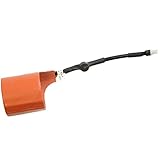When you buy a portable generator to supplement the electrical power in your home, one important question that you will ask is how much gas does a generator use, and how much will it cost to run it per hour?
As a rule of thumb, a portable generator consumes around three-quarters gallon of fuel per hour. But, all generators are not created equally.
Some may consume more and some less than the three-quarter gallon average.
If you reside in an area where power supply is not consistent, you will need a generator to supplement the power to your home or work.
As mentioned earlier, the question of how much will it cost to run your portable generator is a pertinent one. It requires some thought before investing in a portable electric generator.
If you have already determined the cost, you will be able to budget for it. E.g., if the cost is beyond your budget, but necessary, you can decide which appliances you want to run to keep your house safe when the power from the grid is out.
Let’s dive a little deeper into calculating the dollars and cents to run your portable power machine.
Cost Per Hour of Running a 2000-Watt Generator
Portable generators come in a variety of shapes and sizes. The wattage output can range from a few hundred watts to thousands.
Most generators that are built for domestic use produce 2000 watts per hour.
Now, let’s calculate how much it will cost to run a typical 2000 watt generator.
Cost of Running a Generator on a Regular Day
What is a regular day? Most folks will start their day at 6 am in the morning and end at 11 pm. It all adds up to 17 hours a day.
Now we will calculate the cost to run the generator for a full day, i.e., 17 hours.
We are working with the rule of thumb calculation that a generator will normally consume three-quarter gallons of fuel an hour.
Let’s do the math. During a regular running day of 17 hours, the generator will consume 17 x .75 = 12.75 gallons.
The average cost of gas today is $2.5 per gallon. Multiplying $2.5 by 12.75 we get $31.87 per day.
It will cost you $31.87 a day to power your house for 17 hours a day!
If you are one of the lucky few who can comfortably afford to have a generator to power your house for the whole day, more power to you!
Now let’s look at an alternative source of fuel.
Cost of Running a Generator on Propane
There are other kinds of fuel to run your portable home generator too. We will calculate the cost of using propane gas instead of gasoline.
Since propane generators consume the same amount of fuel as gas generators per hour, i.e., three-quarter gallons, we will now calculate the cost.
The average price of propane gas is a little less than gasoline. However, consumption is equal, three-quarter gallons an hour.
With this in mind, we see that running a propane generator to power your home will be a little less, however, the price difference is not in any way significant than a gasoline-powered generator.
Next, we will explore the cost of running a natural gas generator.
Cost of Running a Generator on Natural Gas
While gasoline and propane gas is sold by the gallon, natural gas is supplied to homes through gas pipes, installed and maintained by your utility company. The cost is calculated in kilowatt-hours (KWH) per billing cycle.
Natural gas is used in most homes for its clean, efficient and eco-friendly burning for cooking. However, additional use of natural gas is to run your home generator.
To run your electrical appliances, lights, and other electric equipment, you will need to invest in a natural gas-powered generator.
It is important to keep in mind that these kinds of generators are not usually portable. You have to have them permanently installed outside your home by a professional.
Before we calculate the cost of running a natural gas generator, it is important to note that these generators are, as mentioned earlier, different from your regular portable gas or propane powered kind.
The basic difference is that the natural gas generators come with kilowatt per hour consumption ratings and not the regular wattage ratings of portable generators.
A standard natural gas-powered generator will consume between 7 and 15 kWh.
Let’s do the math again. The cost of natural gas is around $.06 per kWh. The cost of running a 7 kWh generator will be $.06 x 7 = $.42 (42 cents). And for a 15 kWh machine will be $.06 x 15 = $.90 (90 cents).
You will notice that running a natural gas-powered generator costs significantly less than a gasoline or propane-powered generator. It is definitely a cheaper option. However, the cost of purchasing a natural gas generator vs a portable propane or gasoline generator is much higher [link to the right page on our site]
Conclusion
Having a backup portable electric generator will give you the peace of mind in case there is a loss of electric power. It is an investment for the safety and security of your family and your home.
You can always budget the cost of buying and running it in your necessary expenses. There are ways and means to make sure that you are not stranded in the dark when the power goes out.
Yes, running a generator can be an expensive affair. But you will find several informative articles on this website to guide to in selecting one for your needs.
Once you have read the articles, you will be empowered to make the right choice.
Remember this. Getting an uninterrupted supply of electricity is a necessity today!












































